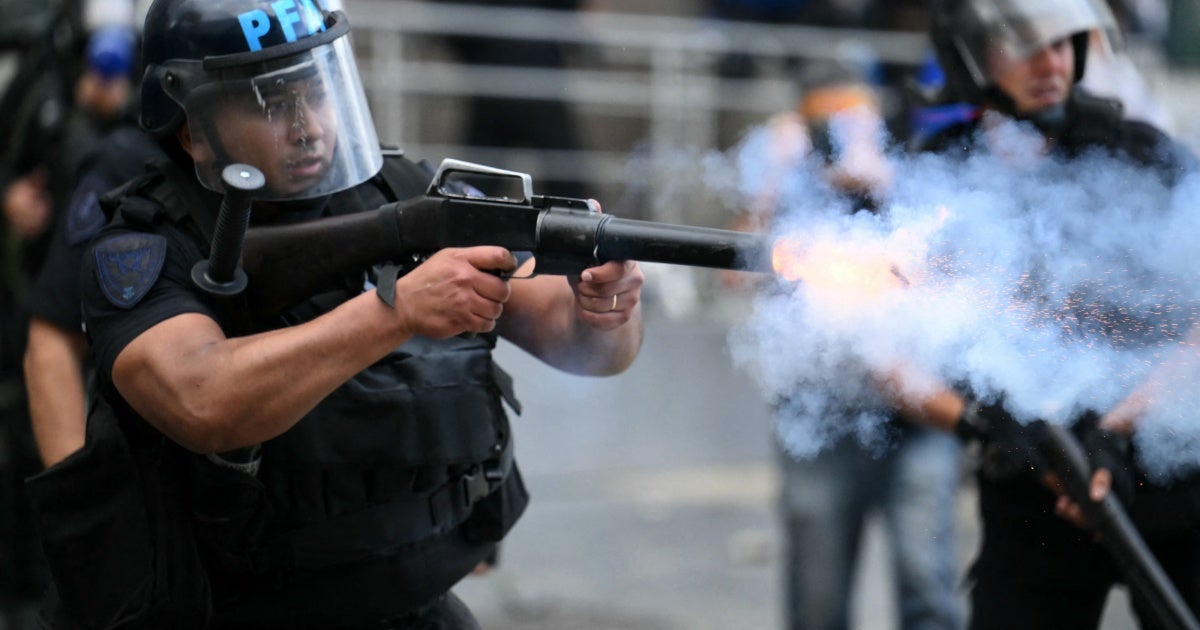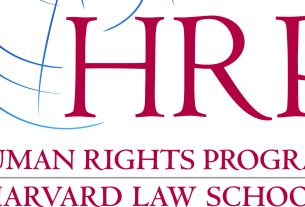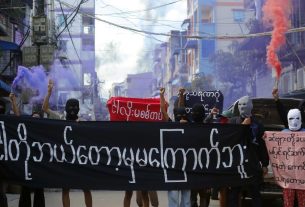(Washington, DC) – Argentine authorities should investigate security forces’ use of force to confront a protest led by pensioners and review an “anti-protest” protocol that opens the door to abuse, Human Rights Watch said today.
On March 12, 2025, hundreds of pensioners gathered outside Argentina’s National Congress in Buenos Aires calling for improvements to their pensions and access to free medicines, among other demands. Hundreds of soccer fans and some “barra bravas” – hardcore supporters of particular Argentine soccer clubs who have been implicated in episodes of violent disorder –joined the protest. Some protesters committed acts of violence, including throwing stones and sidewalk debris at the police and burning police cars and garbage containers. The local government of the city of Buenos Aires said that 25 people were injured during the protest.
“There is strong evidence that members of the security forces responded with an indiscriminate and reckless use of force,” said Juanita Goebertus, Americas director at Human Rights Watch. “The government should investigate and ensure accountability, instead of vilifying a judge who ruled on the protest.”
Human Rights Watch verified, geolocated, and analyzed 32 videos and photographs from the March 12 protest, sourced from television extracts, social media, and photographers’ professional portfolios. The videos and photographs show that a member of the National Gendarmerie fired a tear gas cartridge at Pablo Grillo, a freelance journalist, at 5:17 p.m. This was captured on a live television broadcast. The cartridge hit Grillo on the head, causing a severe brain injury. Human Rights Watch confirmed that the security force official shot Grillo from just over 50 meters away.
A video shows that the gendarme shot the tear gas cartridge toward Grillo at a horizontal angle. This contravenes international standards establishing that the only safe way to fire tear gas cartridges is at an arc so that they land on the ground at a slower velocity. An investigation by Mapa de la Policia, a coalition of human rights groups and investigators, also verified photographs and videos and identified the member of the gendarmerie who fired the tear gas cartridge. Grillo was taken to a hospital in critical condition. He remains in the hospital, although his condition improved in late March.
Additional videos and photographs show that in at least five incidents, members of national security forces fired teargas from domestically produced riot guns in a reckless and dangerous manner, firing teargas canisters horizontally at protesters, rather than at a safe angle. In other incidents, security forces doused protesters, including older people who were not committing acts of violence, with high-pressure water cannons mounted on trucks.
Human Rights Watch also verified six videos that show protesters throwing stones and debris at security forces from sidewalks, including from the interior of the square in front of Congress. Three videos show protesters burning a Buenos Aires police car as well as garbage containers. Protesters also harassed and physically attacked journalists covering the protest. According to the Security Ministry, 14 police officers were injured.
Early on March 12, Security Minister Patricia Bullrich stated that security forces were “deployed to enforce the anti-protest protocol,” a December 2023 resolution that allows security forces to use force in unjustifiable circumstances, Human Rights Watch said. The protocol effectively criminalizes any traffic disturbance caused by demonstrations and allows the police to use force “even when [the demonstrators] do not create a situation of danger.” It lacks provisions requiring the police to use reasonable means against protesters and repeals a 2011 resolution that prohibited the police from using riot guns to deploy tear gas canisters, which is what injured Grillo.
Security forces arrested 114 people at the protest, including at least five who were age 60 or older. A Buenos Aires city judge ordered that all of them be released arguing that “in most cases, the place where the arrest took place was not reported, nor were the circumstances of the arrest or the reasons for the arrest made clear.” The Security Ministry filed a criminal complaint against the judge for the crimes of prevarication, breach of duties, and concealment. The Justice Ministry announced that it would file a disciplinary complaint against the judge before the body in charge of sanctioning and removing judges in the city of Buenos Aires.
The Security Ministry also filed a criminal complaint alleging sedition and other crimes by the alleged protest organizers, including union leaders and opposition mayors. The Argentine criminal code broadly defines sedition as “publicly rising to stop the execution of national or provincial laws or resolutions of national or public officials.”
The vague definition of “sedition” in the Argentine criminal code can be used to criminalize free speech or disproportionately punish government critics, Human Rights Watch said.
Following the protest, Security Minister Bullrich said that the administration of President Javier Milei would not investigate security forces’ role in the March 12 protest, and praised them for “protecting democracy, institutions, and citizens.”
A unit in the Attorney General’s Office focused on human rights violations filed two criminal complaints regarding the actions of security forces on March 12. However, a dispute between two federal judgeships over the case has stalled that investigation.
Argentine judicial and administrative authorities have an obligation to pursue prompt, credible, and thorough investigations into evidence of excessive use of force during the March 12 protests, Human Rights Watch said.
“The Milei government is shielding police officers from accountability and harassing judges whose rulings uphold respect for protesters’ rights,” Goebertus said.



